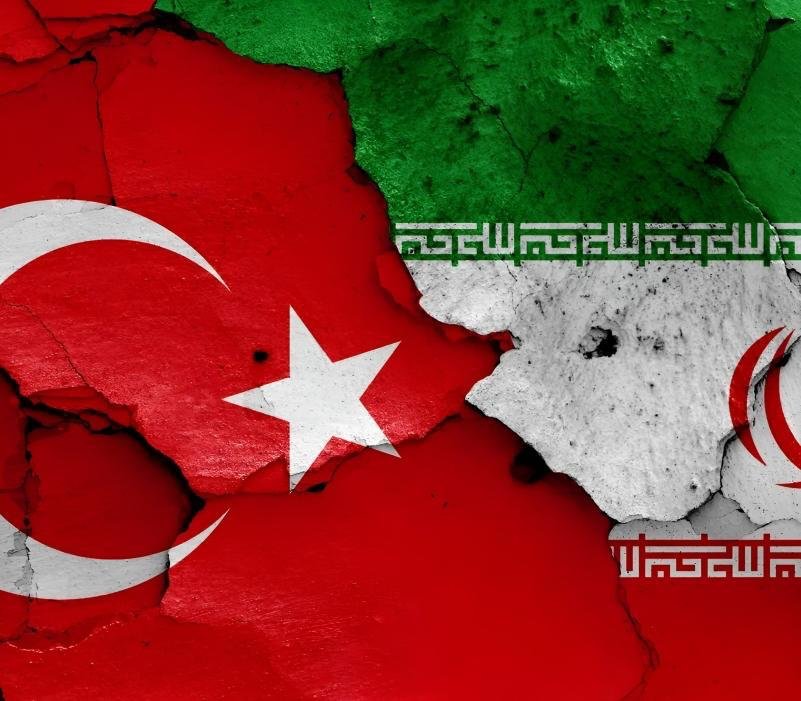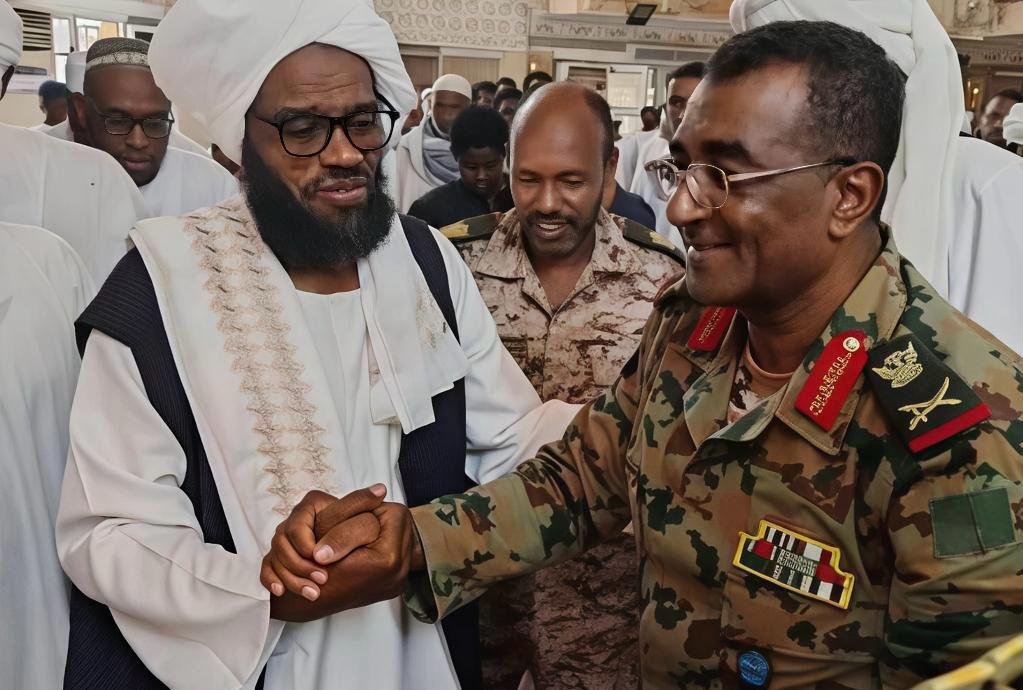Report: SPT
Repeated drone attacks by the Rapid Support Forces (RSF) on key military sites in Port Sudan including the city’s airport, the Osman Digna Airbase, and the Flamingo Naval Base have marked a significant shift in the course of Sudan’s war. The Sudanese Armed Forces (SAF) have lost near total air superiority, a critical advantage maintained for two years, primarily due to the deployment of Turkish and Iranian drones. These systems – including Turkey’s Bayraktar and Iran’s Mohajer-6 were instrumental in the SAF’s capture of Khartoum in March, following intense drone strikes that forced RSF units to withdraw.
The RSF’s use of armed drones represents a strategic breakthrough, particularly after its targeted strike on Wadi Seidna Airbase in April. This military shift coincides with growing internal fractures within the Islamist aligned army coalition and its allied militias even in Port Sudan, the provisional administrative capital previously seen as insulated from the front lines.
Air Dominance.. Atrocities on the Ground
Since the war erupted on April 15, 2023, the Sudanese Armed Forces (SAF) have maintained absolute air superiority, capitalizing on the Rapid Support Forces’ (RSF) lack of air defenses and electronic countermeasures. As a conventional infantry force, the RSF has primarily focused on ground combat, where it specializes.
The SAF has leveraged this dominance to launch relentless airstrikes on RSF controlled areas. However, these strikes have inflicted minimal damage on enemy forces compared to the devastating toll on civilians and civilian infrastructure. One of the deadliest incidents occurred on March 24, when the SAF bombed a market in Tura, North Darfur, killing 400 civilians mostly women vendors and injuring dozens. Local political parties, civil groups, and media outlets denounced the attack as a “massacre.”
Army spokesman Brigadier Nabil Abdullah denied the incident, dismissing the allegations as “false” and asserting that the military “adheres to rules of engagement and international law.” Yet, later video evidence showed the market completely burned, with charred body parts scattered across the streets, corroborated by eyewitness testimonies.
Airstrikes have not been limited to markets and residential areas but have also targeted medical facilities, such as the Kutum Maternity Hospital in South Darfur, and critical infrastructure, including the Al-Jaili oil refinery and Shambat Bridge in Khartoum.
Notably, many of these attacks were preceded by open incitement on pro-army Facebook accounts believed to be run by Islamists celebrating the destruction and bloodshed. Some posts even glorified SAF pilots as the “Great Kebab Maker,” a macabre reference to the charred corpses left in their wake.

Turkey’s Invisible Hand
While international reports have long focused on Russian and Iranian interference in Sudan’s war, Turkey’s pivotal role remained largely overlooked until September of last year. Ankara has been supplying the Sudanese Armed Forces (SAF) with decisive weaponry through Baykar, a defense company partly owned and run by Turkish President Recep Tayyip Erdoğan’s son in law. The firm has delivered tens of millions of dollars worth of arms to the SAF, including eight TB2 drones and hundreds of warheads.
In March 2025, The Washington Post published a cache of documents, text messages, call recordings, photos, videos, and financial records that detail Turkey’s arms transfers to the SAF. The evidence exposed Baykar’s active role in Sudan’s 25 month conflict, which the United Nations has described as the “world’s worst humanitarian disaster.”
On May 4, 2025, a Turkish medical evacuation aircraft landed in Port Sudan just one day after the Rapid Support Forces (RSF) carried out a drone strike on a military airbase in the city. The plane departed two hours later for Antalya. According to Sudanese military sources, the strike killed one Turkish soldier and wounded several others who had been assisting the SAF with drone operations and training.
High level security sources told SPT that Turkey is also transporting military equipment from its base in Qatar to Port Sudan. While the exact nature of these weapons remains undisclosed, the sources confirmed that the transfers are ongoing, signaling Ankara’s sustained military involvement through multiple logistical and operational channels.
IRGC Embedded in Sudan’s War
As Sudan’s brutal conflict stretches past its second year, new evidence reveals the Islamic Revolutionary Guard Corps (IRGC) is not just assisting from afar but actively embedded in the battlefield. From airlifts of advanced weaponry to direct command links with Sudanese Islamist factions, Iran’s footprint is now unmistakable.
Iran’s role in Sudan’s conflict has grown markedly more visible than Turkey’s, especially following the October 25, 2021, military coup that ousted the transitional civilian government and allowed Islamist forces to reassert their influence. This resurgence aligns with Tehran’s renewed ambitions to expand its presence in the Red Sea region an objective it sees as contingent on the return of Islamists to power in Sudan.
Tehran has pursued this goal by channeling direct military support to Sudan’s Islamic Movement, particularly through its armed wings embedded within the Sudanese Armed Forces and affiliated militias. Militias among these is the Al-Baraa bin Malik Brigade, whose commander, Misbah Abuzid Talha, recently confirmed that the unit takes direct orders from Ali Osman Mohamed Taha, former vice president under ousted dictator Omar al-Bashir.

Taha is widely regarded as the spiritual guide effectively, the “Ayatollah” of Sudan’s Islamist movement.
Iran has been transporting weapons into Sudan via air cargo flights operated by Qeshm Fars Air, an airline owned by the Islamic Revolutionary Guard Corps (IRGC). One aircraft in particular, EP-FAB, has been repeatedly observed on known arms delivery routes into the country.
According to exclusive sources, Iranian arms shipments include a range of heavy and light weaponry, artillery, precision guided munitions, explosives, navigation and communication systems, ground control stations, and Mohajer-6 drones single-engine unmanned aerial vehicles capable of delivering guided bombs.
In a notable escalation, a Sudanese naval source reported that on May 9, the Rapid Support Forces (RSF) carried out a drone strike targeting IRGC personnel stationed at Flamingo Military Base, a Sudanese army installation along the Red Sea. Following the strike, the Iranian operatives were evacuated to the al-Raqeeba area, north of Port Sudan. As of this writing, there are no confirmed reports of casualties or injuries among the targeted IRGC personnel.
Advanced Weapons in Jihadist Hands
Political and civil circles in Sudan are growing increasingly alarmed by the influx of Turkish and Iranian weapons particularly drones into the hands of Sudanese jihadist Islamist militias.
While the military’s official spokesperson denies any direct arms transfers to non-state actors, security sources confirm that these militias now possess nearly the same range of weapons as the Sudanese Armed Forces, including drones excluding only manned fighter jets.
Brigadier Jamal Mohamed Ahmed, currently serving with the operations unit at Karari Military Base, confirmed the militias’ access to drones and heavy Iranian weaponry in a video interview recorded by the army’s Moral Guidance Unit published below
We have learned he was later reprimanded for his remarks.
He recounted that in May of last year, while leading a battalion in a field operation, he arrived at a location to find Misbah, commander of the Al-Baraa Brigade, equipped with weapons and two drones.
A source close to the brigade whose brother is a mid level commander told us:
“The entire state apparatus, from the port to the airport, is under Islamist control. These weapons originally came from Iran for the Islamists alone. No one dares to inspect any cargo at the port.”
He added: “They are the fighters, the inspectors, the importers, the ones running the state and the ones with direct links to Iran.”




